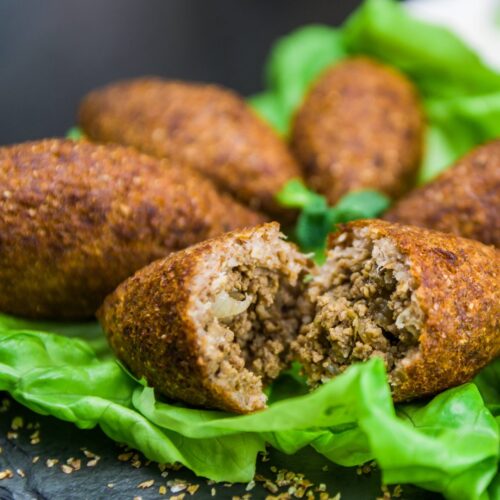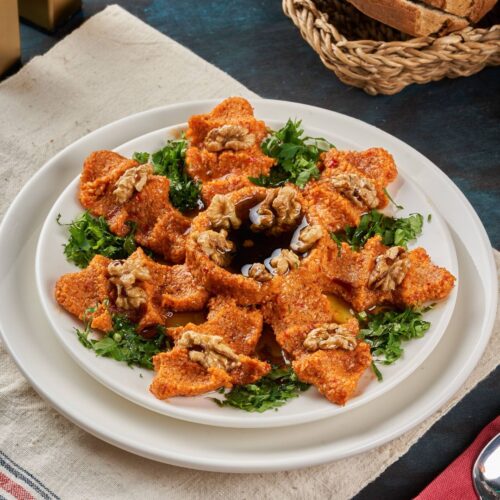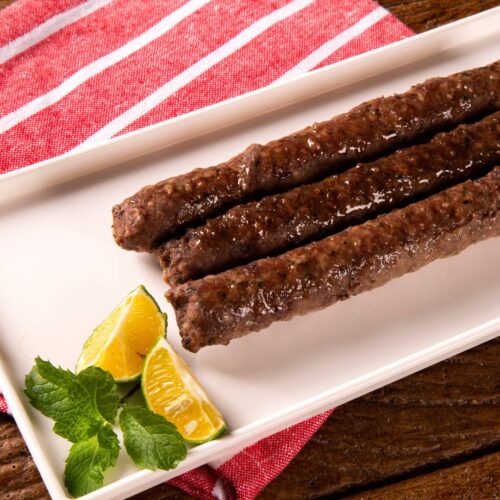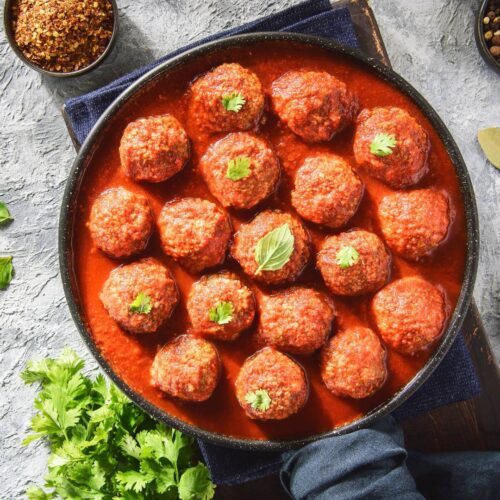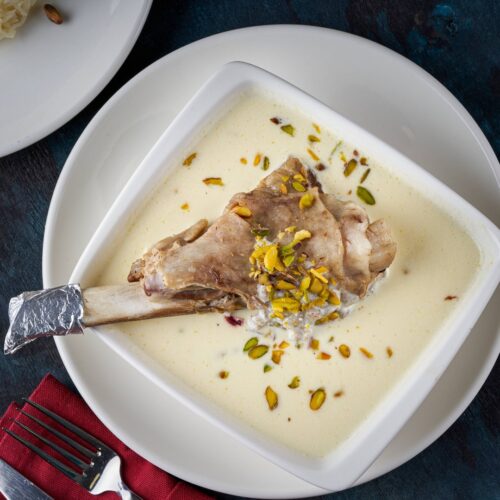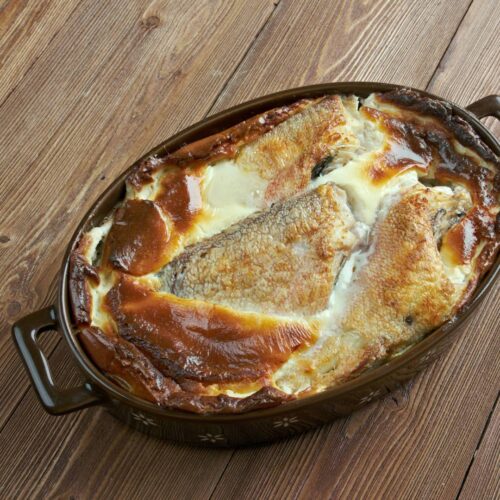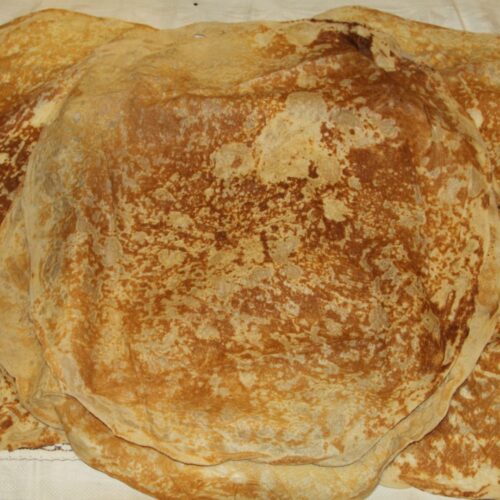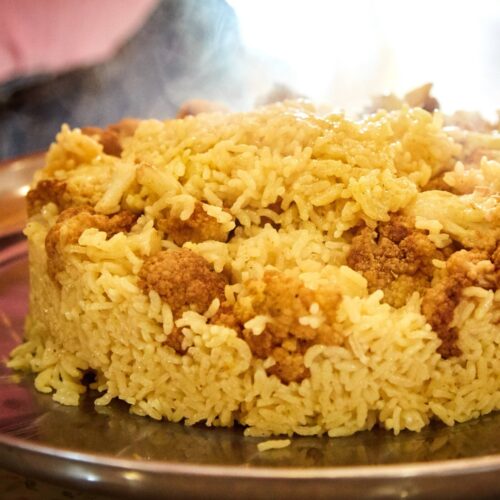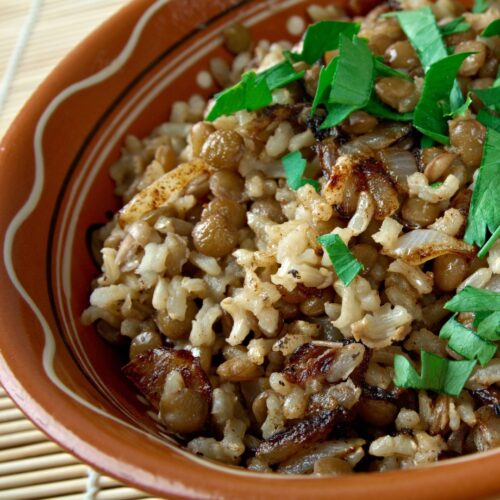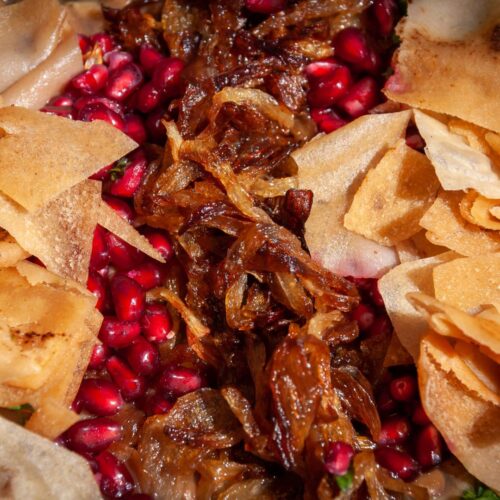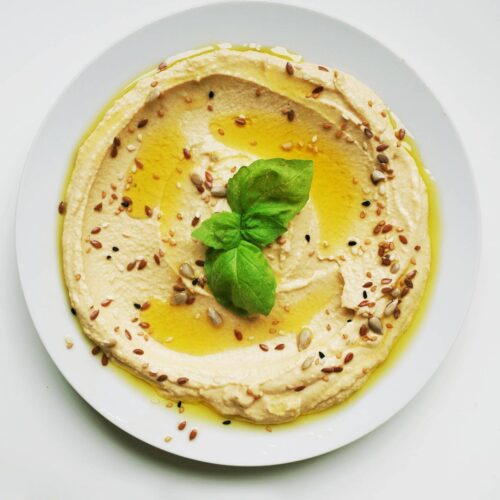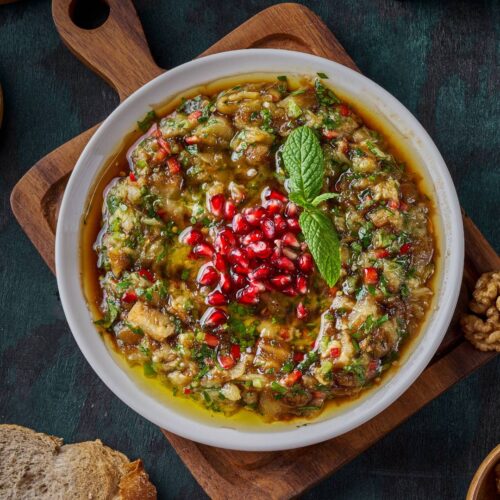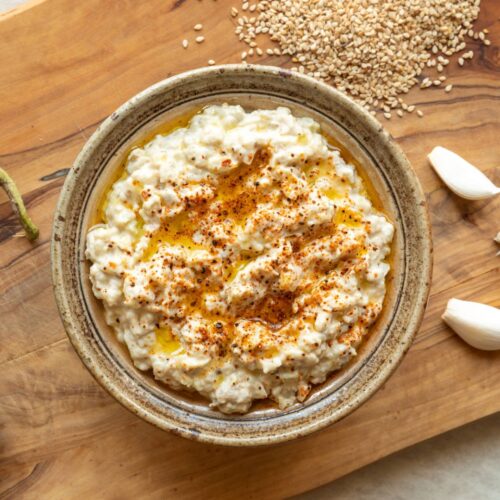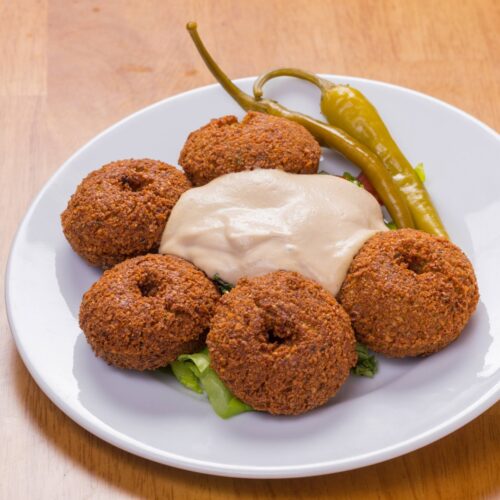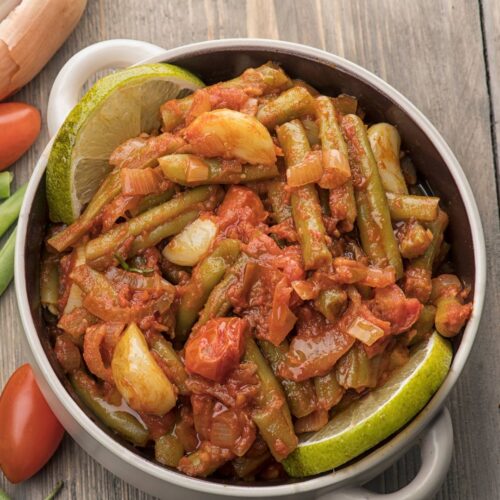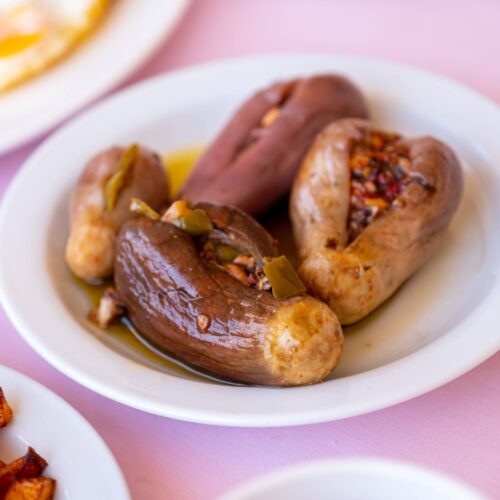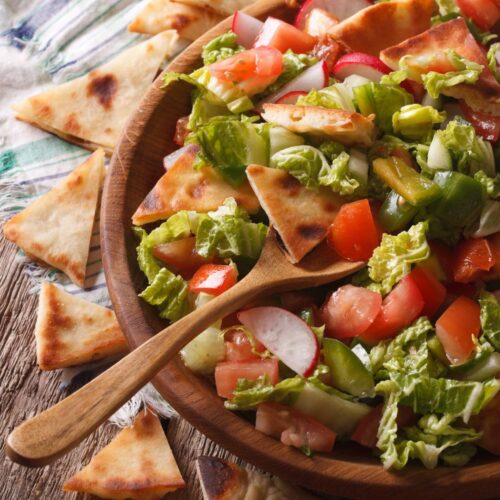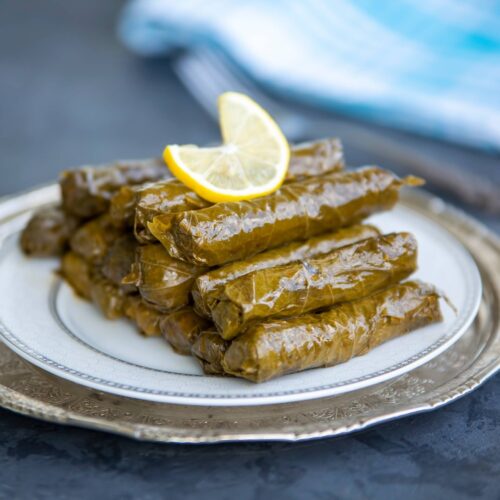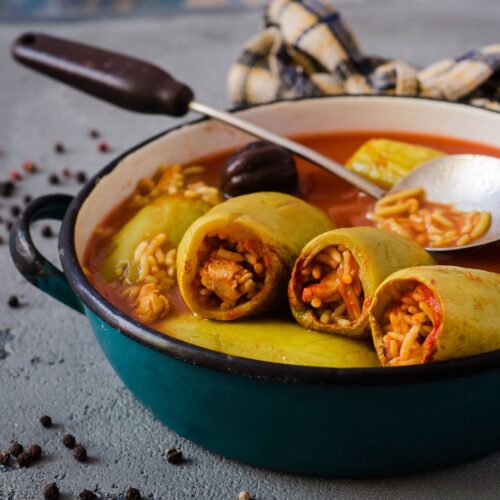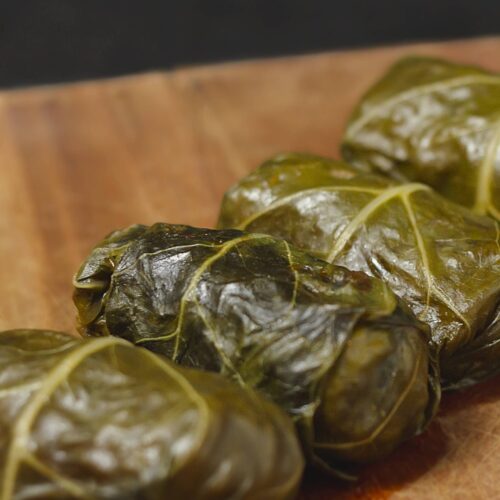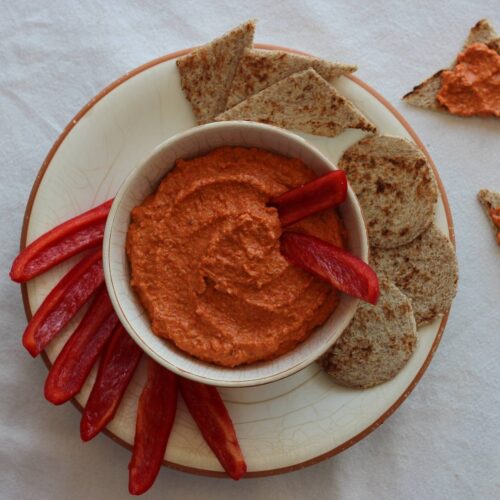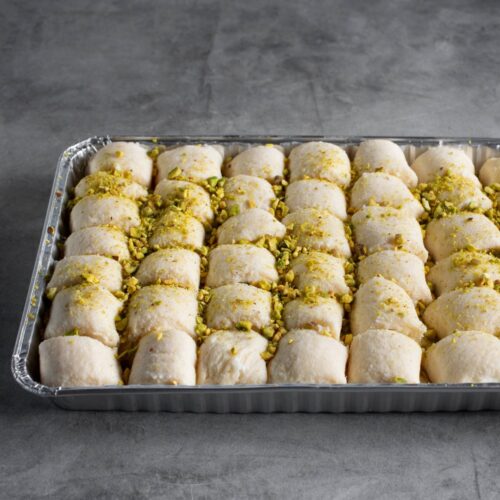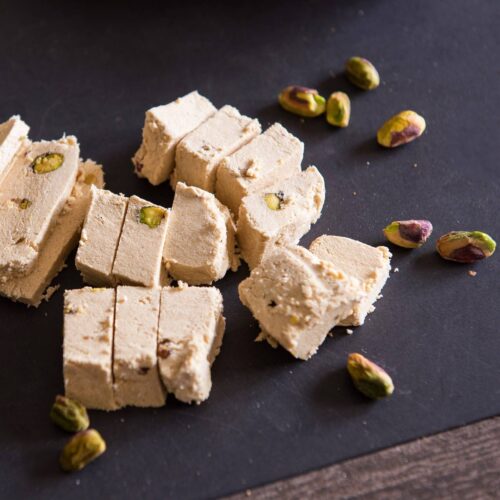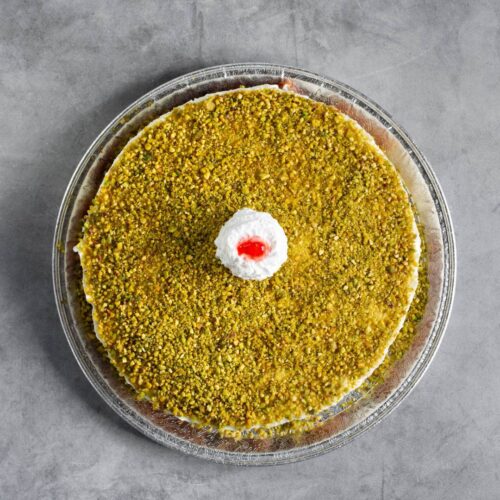THE ESSENCE OF SYRIAN CUISINE
Syrian cuisine is very much tied with its agricultural heritage: grains (bulgur, rice), legumes (lentils, chickpeas), meats (lamb, chicken), and vegetables in one dish. Sweet, sour, salty, and savory are balanced through the use of lemon, pomegranate molasses, yogurt, garlic, and warm spices. Meals are often slow-cooked, hearty, rich, and at the same time loaded with seasonal produce, mint, parsley, nuts, and dried fruits. Textures matter – smooth dips are paired with crunchy breads or fresh salads. Stews are often served with fluffy rice or cracked wheat pilafs. Seasoning is very pronounced, especially with deep and warm spice blends.
Syrian breakfast consists of a simple selection: white cheeses, flatbread, olives, cucumbers, hummus, jam, za’atar with bread or yogurt. Lunch is the main, usually homemade meal of the day, usually featuring legumes, grains, or meat, followed by rice, flatbread, salad, and pickles. Dinners are usually late, of a similar dish choice as breakfast, enriched with hummus (chickpea dip), falafel (chickpea balls), and shawarma (grilled lamb/chicken kebab).
Hot, intense, dark, and sweet tea, sometimes flavored with mint or hibiscus, is the staple drink in Syrian households, consumed throughout the day. The Turkish blend of strong and sweet coffee is also popular.
GRAINS IN SYRIAN CUISINE
Wheat is by far the dominant grain – bread and bulgur are core products feeding people every day. Bread in Syria is referred to as khubz in Arabic and very commonly comes in the flat and oval form. A piece of bread is taken with hands to scoop stews, sauces, and yogurt; it can be split into pockets for various fillings.
Cracked wheat bulgur, partially boiled and then dried again, adds a unique texture and nutty flavor to pilafs, salad (e.g., tabbouleh), soups, stews, and kibbeh (spiced meat and bulgur dish). Bulgur has a very ancient origin, dating back around 4,000 years to the Mediterranean region, and is closely associated with Levantine cuisine. Bulgur is gaining popularity globally due to growing interest in healthy, whole-grain foods. The bulgur market has been expanding significantly, especially in North America, Europe, and increasingly in the Asia Pacific region.
Another popular wheat variation is freekeh, a durum wheat grain that is harvested still green, roasted, and rubbed to have a distinctive nutty taste and chewy texture. It features soups, pilafs, sides, kibbeh, or salad.
Rice is important, but a complementary staple, served as a light, fluffy texture side with a nutty flavor, or combined with beans, vegetables, or ground meat. The ongoing conflict has severely impacted agriculture and food security, resulting in lower rice availability.
PRODUCE IN SYRIAN CUISINE
Alongside grains, vegetables are the second most important food group in Syrian cuisine; many dishes are vegetarian. Eggplants, zucchini, cucumber, tomatoes, bell peppers, onions, garlic, leafy greens, cabbage, okra, and turnips are commonly consumed. Like most of the Levant, Syrians like their vegetables stuffed. The term maharshi translates to stuffed in Arabic, either eggplant, zucchini, or cabbage, as well as leaves. A particular term, yabrak, refers to stuffed grapevine leaves, a dish shared within many Levantine cuisines, though it usually comes as a main hot dish in Syria.
Pulses are a primary source of plant-based protein, mostly lentils, chickpeas, and fava beans. Pulses are combined with seasonal vegetables, olive oil, sumac, and thyme, and slow-cooked.
Pickles (turnips, cucumbers, cauliflower, makdous) are always present in mezze spreads, acting as sharp, salty, sour contrasts to grilled meats, kibbeh, and creamy dips. Within pickles, makdous is the most distinctive – it’s an oil-based preservation of small eggplants, turning this veg into a long-lasting mezze that develops complex, nutty, garlicky flavors.
Syrians integrate cherries, apricots, quince, pomegranate, and dried fruits into meat dishes and kebabs, like kebab karaz (kebab with sour cherries, Aleppo specialty). This sweet-sour pairing is much less common in Western or East Asian cuisines, but shows continuity with Persian and Ottoman influences. Fresh seeds, juice, and especially pomegranate molasses are staples, used in dressings and marinades. Qamar al-din (apricot leather) is a Syrian specialty, dissolved into drinks during Ramadan. Dried figs, dates, raisins, and apricots are often added to rice pilafs and stews. Murabba (whole-fruit preserves in syrup) is served with coffee to guests – a hospitality ritual not widespread outside the Levant.
MEAT IN SYRIAN CUISINE
Lamb and mutton are by far the preferred meats in Syria; they have been essential to the whole Levant for ages. Pork is avoided due to Islamic prohibition; cattle are present, though it is less suited for grazing in arid climates, and smaller ruminants like sheep and goats require fewer resources to grow. Chicken goes alongside sheep and goat meats, though, out of practical reasons, not the tradition.
Grilled Syrian specialties are kebabs and shawarmas. Damascus even has its own kebab, with a unique spice blend: cumin, coriander, paprika, and Aleppo pepper. High-quality lamb or chicken is marinated extensively to allow flavors to blend in, and it is then grilled. Shawarma is a signature Levantine dish in which lamb, chicken, or beef-lamb mix is stacked on a vertical cone, grilled, and sliced for serving in pita bread or on a plate, similar to Turkish doner kebab and Greek gyros. Locally, meat is marinated with cinnamon, allspice, cardamom, cloves, yogurt, and sometimes pomegranate molasses, whereas shawarmas abroad are usually only flavored with cumin/garlic mixes.
Levantine cuisine often features meat that is ground or minced, as seen in kibbehs, koftas, and stuffed vegetables. The making of kibbeh is highly refined in various versions. The city of Aleppo is known for having more than 17 types of kibbeh. Kibbeh is prepared by combining meat and bulgur into a paste with spices and pine nuts and deep-fried, grilled, or served raw. The city of Aleppo is known for its special version, kibbeh halabiyeh.
FISH AND SEAFOOD IN SYRIAN CUISINE
Though it has access to the Mediterranean Sea, Syria is not a fish-eating nation, except for coastal areas. There, fish is frequently fried, contrary to the Southern Mediterranean tradition, which limits spices and emphasizes fish flavor. In Syria, fish recipes highlight spices, like in sayadieh – fish cooked with spiced rice, deep fried onions, and tahini sauce, or samkeh harra – a spicy fish dish.
MILK AND DAIRY IN SYRIAN CUISINE
In Syria, like much of the Middle East, people rely on fermented and cultured dairy.Yogurt, is central condiment and cooking ingredient, often simmered into dishes, turning into a creamy, tangy base. Classic examples are shakriyeh (lamb cooked in yogurt sauce) or fatteh.
Day to day, you’re more likely to find yogurt, labneh, or ayran on the table than a glass of fresh milk. Labneh is one of the real staples – thick, spreadable, and somewhere between yogurt and cheese. It’s very versatile: drizzled with olive oil, dusted with za’atar or chili, part of a meze, or simply a side to almost any meal.
Syria also has some ingenious methods for preserving milk. One of them is jameed (also called kashk) – yogurt turned into hard, salty ‘stones.’ Traditionally made from sheep’s milk, it’s fermented, strained, salted, and dried until it becomes very dense. Later, it can be rehydrated and used in cooking.
Cheese plays a smaller role, but there are still local favorites. A good example is jibbneh mashallale – a string cheese kept in brine and often flavored with spices like mahlab, nigella seeds, anise, or caraway.
OILS, NUTS AND DESSERTS IN SYRIAN CUISINE
Like in other Mediterranean countries, olives are a beloved condiment. Olive oil is the most to flavor – a key ingredient in dips—muhammara, baba ghanouj, and hummus. Sunflower oil and ghee are also used substantially.
Nuts are very popular (though current consumption may be diminished due to the ongoing war), especially pistachios, walnuts, almonds, and pine nuts. Pine nuts were once so valued in the Levant that whole pine forests were managed just for their harvest. In Syria and Lebanon, the stone pine has been cultivated for centuries because of its edible seeds. Extracting them is extremely labor-intensive – each cone takes up to three years to mature, and the nuts then have to be cracked by hand, which explains why pine nuts are among the most expensive nuts in the world. They’re not just a garnish: in Syrian cooking, pine nuts are sprinkled over rice dishes, kibbeh, and stews.
Syrian desserts are sweet, rich, and layered. They usually feature nuts, pastry, syrup, and cheese. A hallmark of Syrian sweets is the tradition of pastry and syrup. Thin dough, phyllo, or semolina is filled with pistachios, walnuts, or almonds, baked, and then soaked in sugar syrup. Very classic are baklava (baklawa), harisseh (semolina cake), and knafeh nabulsieh (cheese pastry with semolina crust and syrup) – all follow this pattern.
Milk and semolina puddings are another important branch of Syrian sweets. For example, mhalabiyeh, a milk pudding scented with rose or orange blossom water and topped with pistachios. Or meghli, a spiced rice pudding with caraway, anise, and cinnamon, which is traditionally prepared to celebrate the birth of a child.
Fruits are also dessert ingredients, both fresh and preserved. Whole fruits preserved in syrup, known as murabba, are a sign of hospitality, served with coffee to guests. Dried figs, dates, and apricots find their way into confections and drinks, most famously qamar al-din, an apricot leather drink consumed during Ramadan.

